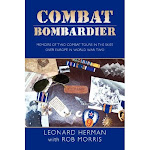The writer has returned to his computer.
Son Matt (20), son-in-law Cody Davis (25) and myself (old) traveled 1,300+ miles since Friday, and saw most of southern Wyoming and a piece of Colorado as well. We visited my son's home town and also Medicine Bow, the town where we lived for four years in the eighties.
I will give a full report tomorrow, broken down into several categories. Norris King's story is so amazing and unknown that I plan to write up it and submit it to several aviation history and World War Two magazines.
For now, I submit a couple of photos from the trip, with only minor commentary.
 Matt Morris (left, in Sosa jersey) and Cody Davis (right, in white shirt) enjoy the Colorado Rockies/Chicago Cubs game on Sunday, August 12 at Coors Field, Denver, Colorado.
Matt Morris (left, in Sosa jersey) and Cody Davis (right, in white shirt) enjoy the Colorado Rockies/Chicago Cubs game on Sunday, August 12 at Coors Field, Denver, Colorado. We saw a game on Saturday evening and another on Sunday. Sunday's game was a hot one, with temperatures over 100 degrees.
Second, the highlight of the trip for me was meeting with Norris King and his lovely wife Marilyn, who live in Arvada, Colorado. Norris's 15th Air Force B-17 was shot down in 1943 by Swiss anti-aircraft fire. The day his plane went down, 13 Americans were killed in Switzerland. On Norris's plane, only three of the crew of ten survived. Norris shared his experiences and we had a great visit. The photo today shows Norris with a piece of his plane, which he was given upon his return to Switzerland fifty years after the war. It is in a shadow-box in his den. Norris spent time as a Swiss internee before escaping from Switzerland later in the war, joining up with the French underground, and making his way back to Allied lines. Though he is 82, he looks younger than me. For Norris's story, see my book 'Untold Valor' pages 177-182.

Norris King and a piece of his B-17, a 99th BG B-17 named 'Sugarfoot' that was shot down by Swiss anti-aircraft, killing all but three members of the crew on October 1, 1943.
 Marilyn King, Norris King, and Rob Morris at the King home, Arvada, Colorado, Sunday August 12, 2007.
Marilyn King, Norris King, and Rob Morris at the King home, Arvada, Colorado, Sunday August 12, 2007.More tomorrow, so stay tuned.
 An old photograph of Medicine Bow, Wyoming, circa 1917. This is pretty much how it looked when we lived there, as well, right down to the water tower.
An old photograph of Medicine Bow, Wyoming, circa 1917. This is pretty much how it looked when we lived there, as well, right down to the water tower. The Virginian Hotel, at one time the tallest building between St. Louis and California on the railroad. It is named for the title character in Owen Wister's famous novel, 'The Virginian'. We may stay here tomorrow night.
The Virginian Hotel, at one time the tallest building between St. Louis and California on the railroad. It is named for the title character in Owen Wister's famous novel, 'The Virginian'. We may stay here tomorrow night.
 The remains of Norris's plane 'Sugarfoot', in Switzerland. Norris has a piece of the plane at his home in Colorado, given to him years after the war by the man who shot the plane down.
The remains of Norris's plane 'Sugarfoot', in Switzerland. Norris has a piece of the plane at his home in Colorado, given to him years after the war by the man who shot the plane down. Coors Field, Denver, Colorado. Home of the Colorado Rockies. We will be sitting for both games in the 'Rockpile', which are the cheapest seats in the stadium, directly to the center of the photo, behind the pine trees.
Coors Field, Denver, Colorado. Home of the Colorado Rockies. We will be sitting for both games in the 'Rockpile', which are the cheapest seats in the stadium, directly to the center of the photo, behind the pine trees. Coors Field, Denver. A new stadium with a disinctly vintage feel to it.
Coors Field, Denver. A new stadium with a disinctly vintage feel to it.
 A Storch carrying German commander
A Storch carrying German commander 

 This Horsa glider crashed in France on D-Day, killing its pilot and passengers.
This Horsa glider crashed in France on D-Day, killing its pilot and passengers. Gee....sounds like fun to me! Where do I sign up?
Gee....sounds like fun to me! Where do I sign up? A Waco glider underway, its tow-line visible to the left.
A Waco glider underway, its tow-line visible to the left. After D-Day, Allied forces attempted to recover as many of the gliders as they could. Here, a C-47 snatches the first glider to be picked up in France and returned for future use.
After D-Day, Allied forces attempted to recover as many of the gliders as they could. Here, a C-47 snatches the first glider to be picked up in France and returned for future use. A museum mock-up of the interior of a Waco glider.
A museum mock-up of the interior of a Waco glider.




 Henry 'Hank' Aaron, former home run king.
Henry 'Hank' Aaron, former home run king. The Sultan of Swat--the Bambino--Babe Ruth, who some believe will always be the king.
The Sultan of Swat--the Bambino--Babe Ruth, who some believe will always be the king.












 After.
After.




